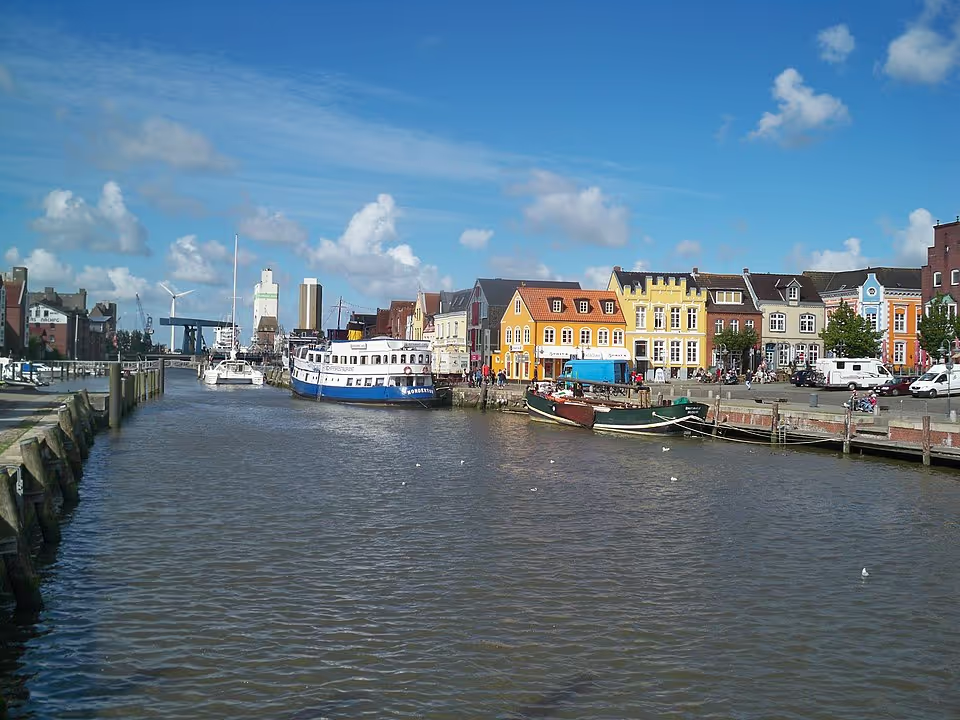Husum: Discover Storm City on the North Sea

The charming port town of Husum on the North Sea coast in Schleswig-Holstein enchants visitors with its rich history and picturesque surroundings. In fact, there is a lot to see and discover in the district seat, which has just over 20,000 inhabitants.
City history of Husum
Husum is located right on Wadden Sea UNESCO World Heritage Site. This ideal location gives Husum a special, maritime atmosphere. The urban area stretches on both sides of the Husumer Mühlenau river. It flows from east to west and flows upstream into the Wadden Sea deep of the Heverstrom. This proximity to water was and is both a blessing and a curse for the district seat.
In 1362, today's Husum became a coastal town due to the great storm surge (Grote Mandränke), which created a navigable connection between the Mühlenau valley and the sea. Husum is therefore “a child of storm surge” and became an important transhipment port almost “overnight”. The place name Husum was mentioned for the first time in 1409. It is derived from the word root “hus”, which means something like houses or settlement. Maritime trade and market rights granted in 1465 caused Husum's economic rise. But another major storm surge in 1634 caused Husum's economic stagnation: It destroyed a large part of the island of Strand (today: Nordstrand) and thus Husum's granary.
Increasing competition from the port cities of Tönning and Friedrichstadt as well as the wars of the 17th and early 18th century also contributed to the end of Husum's heyday. It was only in the second half of the 19th century that Husum's economy began to recover thanks to the cattle trade. The port was expanded and, after being connected to the railway network, the city finally became a center of the North German cattle trade.
It was only with the closure of the cattle market in 1970 that Husum was able to expand further thanks to the vacant land on the northern outskirts of the city. In 1971, Eiderstedt, Husum and Südtondern were united to form the district of North Frisia with a catchment area of around 100,000 inhabitants. Today, Husum is a picturesque district town whose historic roots are visible in the well-preserved buildings of the city center.
Culture, beaches and the sea
Husum's harbour, picturesque streets and squares make the city a popular destination for tourists who want to enjoy the unique mix of history, culture and maritime flair. Husum was also influenced by the famous German poet and writer Theodor Storm, who was born there. Theodor Storms The poem “The City” gave Husum the nickname “gray city by the sea.”
He is also honored by the annual event in September “Storm Conference” (Husumer Kulturwochen). It offers a diverse cultural and scientific program. Each conference also includes an excursion within Schleswig-Holstein. Destinations are visited that are directly or indirectly related to Theodor Storm and the landscape of northern Germany. The Storm Museum is also very close to the harbour. The poet lived in this 18th century merchant's house from 1866 to 1880. Here you can still discover, among other things, the original living room and his poetry room.
The central market square lives up to its name. Since 1465, a large weekly market known far beyond Husum's borders has been taking place here on Thursdays. St. Mary's Church opens its doors on this day for a market service, and right in front of the church tower is decorated by Tine-Brunnen den Husumer Markt. Tine is Husum's secret landmark and is regarded as a reminder of two of the city's benefactors: Anna Catharina “Tine” Asmussen and her cousin August Friedrich Woldsen. That is why the official name of the Tine Fountain is also the Asmussen-Woldsen Memorial.
Crocus flower, crab fishermen & cutter parade
In spring, a visit to the castle in front of Husum is particularly worthwhile. The “Husumer Krokusblüte” then takes place in the extensive park. During this time, over four million crocuses transform the park into a purple natural spectacle.
In terms of cuisine, Husum is known for its crab fishing. Every year in October, during crab days, everything revolves around the small marine animals. In midsummer, the Husum Harbour Days attract hundreds of thousands of people to the city with gourmet mile, live music and fishing parade.
If all the hustle and bustle is too much for you, you can switch to the neighboring beaches to relax: Dockkoogspitze, Lundenbergsand and the swimming area in Schobüll. Dockkoogspitze Beach is located near the city center and is considered Husum's green oasis.
In Simonsberg to the southwest, the Lundenbergsand bathing area with particularly shallow water and a quiet location awaits those seeking relaxation. And in the north of the city, the Schobüll beach offers almost kilometers of unobstructed views, plenty of space for long dyke walks and the popular pier.



